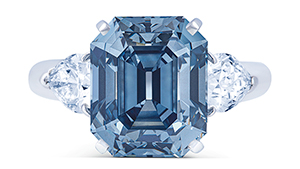GIA Introduces Expanded Nacre Scale to All Pearl Classification Reports
Protecting consumers and meeting trade needs
CARLSBAD, Calif. – May 19, 2025 – GIA (Gemological Institute of America) is introducing an expanded approach to evaluating nacre on all pearl classification reports, providing an important update to the Institute’s well-established comprehensive pearl classification system, the GIA 7 Pearl Value Factors™.
Previously, GIA classified nacre as “Acceptable” or “Unacceptable” based on several factors. Acceptable denoted expected commercial nacre quality, in terms of thickness, layering and condition, while “Unacceptable” denoted poor quality nacre that may impact durability, such as thinness, chalkiness or damage. Prompted by observations and requests from members of the global pearl trade, the new scale will describe and classify the continuity and quality of the nacre in a way that is more aligned with other quality factors.
The nacre scale was developed through detailed examination of a wide assortment of pearl samples with varied surface and sub-surface features that can indicate differences in nacre layering and continuity during a pearl’s growth. As a result of this update, the majority of pearls submitted will now be classified as having Good, rather than Acceptable, nacre.
During classification service, the nacre of a pearl, strand or other item will be evaluated based on the degree of eye-visible movement (nacre variation) found on either the surface or sub-surface layers of nacre, in addition to the post-harvest condition including wear, damage, modifications and treatments, and trade standards for thickness. The nacre will fall into one of GIA’s five classification ranges (Excellent, Very good, Good, Fair, and Poor), which will be stated on all GIA pearl classification reports.
“Nacre formation plays a critical role during a pearl’s growth, as its structure influences other value factors such as size, shape, luster, and surface quality. Nacre thickness and continuity also affect the pearl’s durability,” said Tom Moses, executive vice president and chief laboratory and research officer. “This update on the nacre quality scale provides improvement to the existing nacre quality description for the GIA 7 Pearl Value Factors classification system that better serves our clients.”
To learn more about GIA’s pearl reports and services, visit https://www.gia.edu/gem-lab-service/pearl.
GIA has been a leader in the identification and classification of natural and cultured pearls since 1949. GIA contributed to revising the U.S. Federal Trade Commission’s pearl guidelines for the jewelry industry and is responsible for working with major pearl companies globally to develop comprehensive standards for describing pearls. These standards are the GIA 7 Pearl Value Factors: Size, Shape, Color, Nacre, Luster, Surface and Matching.
A sample GIA Pearl Classification Report, #2233514599, with the expanded nacre scale, can be seen in the GIA Report Check service.


